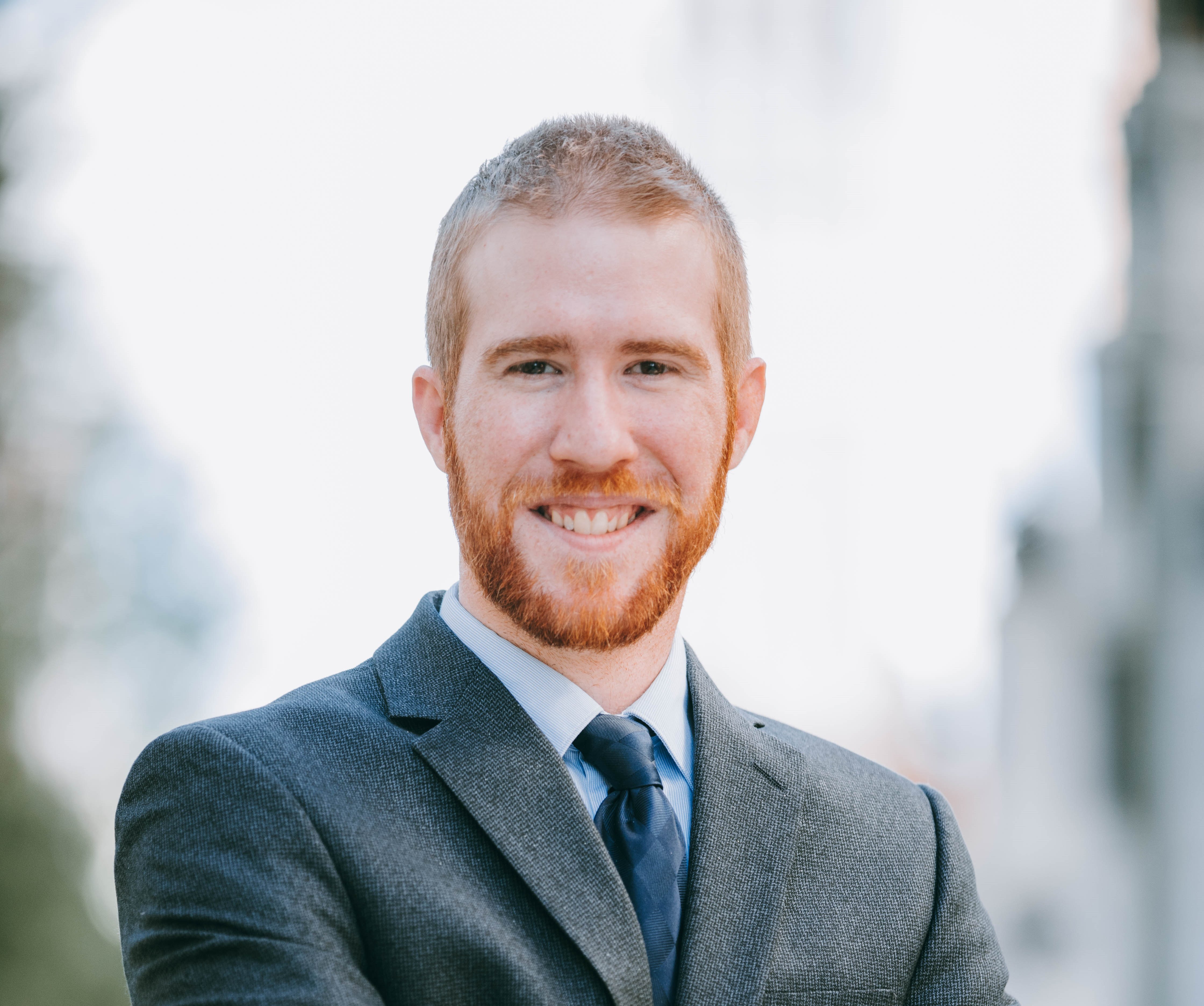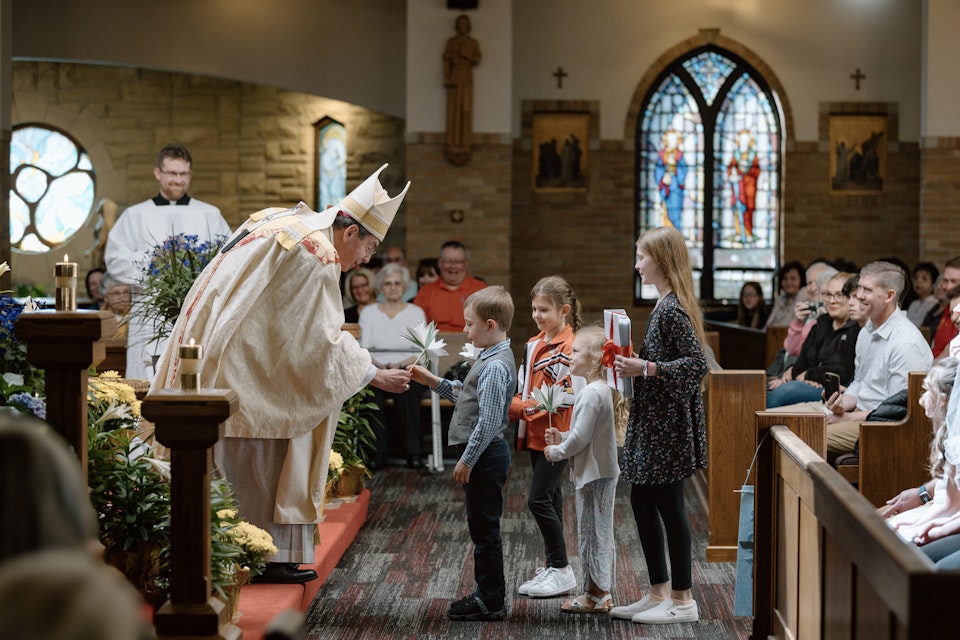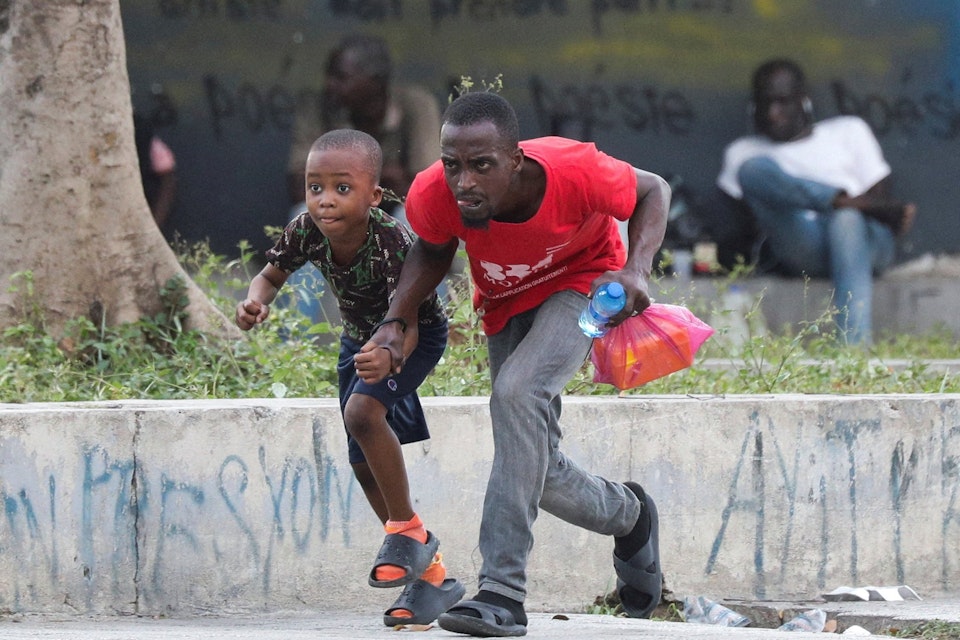 In just a few weeks, thousands of bishops, clergy and faithful from across the country will descend on Detroit for the beatification Mass of Venerable Solanus Casey in what will be the largest Mass in Detroit since the 1987 Pontiac Silverdome Mass celebrated by Pope St. John Paul II. According to organizers, the altar, processional cross and some Communion vessels from the pope's Mass will be used during the beatification liturgy. (Michigan Catholic photo illustration/Ford Field photo by Tim Hinkle)
In just a few weeks, thousands of bishops, clergy and faithful from across the country will descend on Detroit for the beatification Mass of Venerable Solanus Casey in what will be the largest Mass in Detroit since the 1987 Pontiac Silverdome Mass celebrated by Pope St. John Paul II. According to organizers, the altar, processional cross and some Communion vessels from the pope's Mass will be used during the beatification liturgy. (Michigan Catholic photo illustration/Ford Field photo by Tim Hinkle)Beatification will see 'Jesus planting his cross' in the heart of Detroit, organizers say
DETROIT — On Nov. 18, there will be more than a few Hail Marys thrown around inside Ford Field. And unlike a football game, every single prayer will be answered.
Later this month, jerseys and helmets will be replaced by chasubles and miters as thousands of bishops, clergy and faithful from across the country prepare to celebrate the beatification of Venerable Solanus Casey in the largest venue Detroit could find.
There won’t be pyrotechnics or huge inflatable lions when the opening procession begins through the stadium’s giant tunnel, but it should be a surreal sight nonetheless.
 Venerable Fr. Solanus Casey, OFM Cap., records a note from a woman who visited him at St. Bonaventure Monastery in Detroit in 1941. Fr. Solanus kept dozens of notebooks filled with prayer requests and favors from the thousands who visited him each year. (File photo)
Venerable Fr. Solanus Casey, OFM Cap., records a note from a woman who visited him at St. Bonaventure Monastery in Detroit in 1941. Fr. Solanus kept dozens of notebooks filled with prayer requests and favors from the thousands who visited him each year. (File photo)“The image for me, when we think about what the Mass is, becomes Jesus planting his cross — his massive cross — in the center of Ford Field,” said Fr. Robert Spezia, one of several priests helping coordinate the massive liturgy. “Picture this massive crucifix that he died on coming down and being planted on the 50-yard line; that’s what’s going to happen on Nov. 18.”
Besides the challenge of organizing Communion for 66,000 people, the liturgy of beatification will be new for almost everyone, said Fr. Larry Webber, OFM Cap., vice postulator for Fr. Solanus’ sainthood cause and a lead coordinator for the Mass.
“We’re coordinating with the Congregation for the Causes of Saints and with our postulator in Rome for all of the readings,” Fr. Webber said. “The first model of the booklet we’re using is from a blessed in Switzerland, which was a multilingual celebration. But we have been in touch with all of the celebrations that have happened here in the United States, including Newark and Washington, D.C.”
The beatification rite itself is only a small portion of the Mass, inserted between the penitential rite and the first reading — but an important one.
After the archbishop and the Capuchins’ minister general offer words of thanks, Cardinal Angelo Amato, prefect of the Vatican congregation, will read the decree from Pope Francis officially declaring Fr. Solanus “Blessed Solanus.”
“In a kind of medieval gesture, after he reads it, the cardinal will stand and hold the decree up so everyone can see it,” Fr. Webber said. “This is to show and prove that this is from the Holy Father. Then there’s the unveiling of the image of Fr. Solanus, applause and music and a procession with the relics.”
The relics of Fr. Solanus, which were collected from his tomb in July, will be carried by those who’ve received favors through the holy Capuchin’s intercession, including the Panamanian woman whose healing from a skin disease in 2012 was the official miracle recognized to move Fr. Solanus’ cause forward.
They will present the relics to Cardinal Amato and Archbishop Allen H. Vigneron, to be placed near a simple, wooden shrine.
Asking heaven’s help
Fr. Spezia said the altar, processional cross and some of the Communion vessels will be the same ones used during the 1987 Pontiac Silverdome Mass celebrated by Pope St. John Paul II.
Fr. Spezia said it’s a “great honor” to be asked to help coordinate such a special liturgy — even if he isn’t quite sure how to tackle the monumental task of getting Communion distributed to so many people in a timely manner. Still, considering the subject, he’s confident things will work out.
“I’ve always found with these kinds of things that heaven really helps us. We’re not doing this alone,” said Fr. Spezia, director for clergy and consecrated life for the Archdiocese of Detroit and one of dozens of clergy and laity helping organize the massive Mass. “To coordinate this great treasure that the Lord has given to us, His risen body, that’s what’s most special for me.”
Before Mass, priests will hear confessions in the stadium — which is important considering the plenary indulgence offered to those who attend.
“One of the requirements (for the indulgence) is confession, and we want to make that as available as possible,” Fr. Spezia said.
Between the time the doors open at 2 p.m. and the start of Mass at 4, it’s possible there will be testimonials played on the stadium’s “big screen,” but the fanfare will be understated — befitting a humble Capuchin’s spirituality.
While there will be some reserved seating on the field, it won’t be for traditional “VIPs,” Fr. Spezia said.
“It’s going to be everybody together, those who have influence and those who have none,” including volunteers, donors, clergy, supporters and people who are disabled or sick, Fr. Spezia said. “It should be a good cross section.”
A hymn for Fr. Solanus
The readings and musical selections will be proclaimed in a variety of languages — including English, Spanish, Vietnamese, Aramaic and Tagalog (the language of the Filipino people) — a reflection of the diversity of the Church and those Fr. Solanus served.
 An image of Fr. Solanus Casey is seen on the cover of a book. (CNS photo)
An image of Fr. Solanus Casey is seen on the cover of a book. (CNS photo)Fr. Ed Foley, OFM Cap., professor of liturgy, music and spirituality for the Catholic Theological Union in Chicago, who will direct the nearly 300 singers and 25 orchestra members for the Mass, said coordinators want the liturgy to mirror the simple, accessible spirit of Fr. Solanus.
For example, while the orchestra will feature 20 different instruments — including traditional Irish folk instruments, a testament to Fr. Solanus’ heritage — the music itself will be familiar to many people, such as “Taste and See” by James E. Moore and the Communion hymn “Gift of Finest Wheat.”
“We decided not to do any music in Latin because Solanus actually failed his Latin exams,” Fr. Foley said. “We thought he wouldn’t be able to sing along.”
There will be at least one new piece of music; Fr. Foley said organizers have commissioned Benedictine Sr. Delores Dufner, a well-known hymn text composer, to create a hymn to Fr. Solanus.
“The tune we chose was ‘God of Day and God of Darkness.’ We chose that hymn because we thought it was gentle and unpretentious and rich and well known,” Fr. Foley said. “It fit, like her wonderful text, the spirit of Solanus.”
The hymn, called “God, be Praised for Humble Service,” will be sung before the final blessing.
Organizers want the music for the Mass to be “strong and powerful without being too pretentious,” Fr. Foley added.
“There’s going to be 68,000 people and the pope’s representative, so you can’t be too low-key, but on the other hand we wanted it to be accessible to the ordinary folks who have showed up year after year to be with Solanus,” Fr. Foley said.
Joe Balistreri, director of music for the Archdiocese of Detroit who’s helping Fr. Foley organize the choir, said each parish was invited to bring a quartet — a soprano, alto, tenor and bass — with about 50 parishes signing up to do so. In addition, singers from the Archdiocesan Chorus and Solanus Casey Center choir will join their voices.
“It’s really a cool effort because it’s much broader than a normal liturgy,” Balistreri said. “It involves so many people and it’s really all-encompassing. It’s fun to be at the hub of that.”
Balistreri said the musicians, some of whom will be coming from out of state, will have just three days to rehearse together — twice at St. Scholastica Church in Detroit and once at Ford Field — leading up to the Mass.
“The biggest consideration is it’s basically like singing outside because the space is so vast,” Balistreri said. “Unlike singing in a normal church, the choir has to have monitors and amplification even to hear itself.”
“People are really excited about it,” Balistreri added. “I’ve been getting calls and emails and texts from music ministers all over the diocese just delighted that this is happening.”
A call for everyone
For Fr. Spezia and other coordinators, the beatification is a reminder that, as Archbishop Vigneron has said, “God loves Detroit,” and everyone is called to a higher purpose.
“We’re celebrating the fact that God has told us by means of working a miracle through the intercession of Fr. Solanus that Fr. Solanus is in heaven with him. That’s what we’re celebrating,” Fr. Spezia said. “I think it’s important that we realize that this is the call for all of us.”
That such a miracle comes through a priest serving as a humble doorman is a powerful image for everyone, Fr. Foley added.
“Even though he was ordained a priest and was never allowed to publicly preach, he answered the door,” Fr. Foley said. “Fr. Solanus demonstrates that the call to priesthood is not a call to power. It’s a call to incredibly humble service.”










